Date: December 15, 2002; To: PFIC Message Board; From: Steve Carson; Subject: The Doors and Venice Pier…
According to “The Doors” bio-book “No One Here Get Out Alive,” the historic meeting of acquaintances Jim Morrison and Ray Manzarek, where Morrison recited his poem that became the Doors’ song “Moonlight Drive,” and prompted Manzarek to say “Let’s start a band and make a million bucks,” took place at the foot of Venice Pier in the summer of 1965, shortly after it opened to the fishing public.
[Morrison lived in and around Venice during the time he was in UCLA. For a period of time he was homeless and slept wherever he could find a place to crash. Apparently his favorites included his friend’s couches, their cars—and under the Venice Pier. KJ]
<*}}}}}}}}}>< — Apparently some pier fish wound up at Marineland. Such was the case with this seven-gill shark in 1978. I’m not sure what happened to them when Marineland closed.
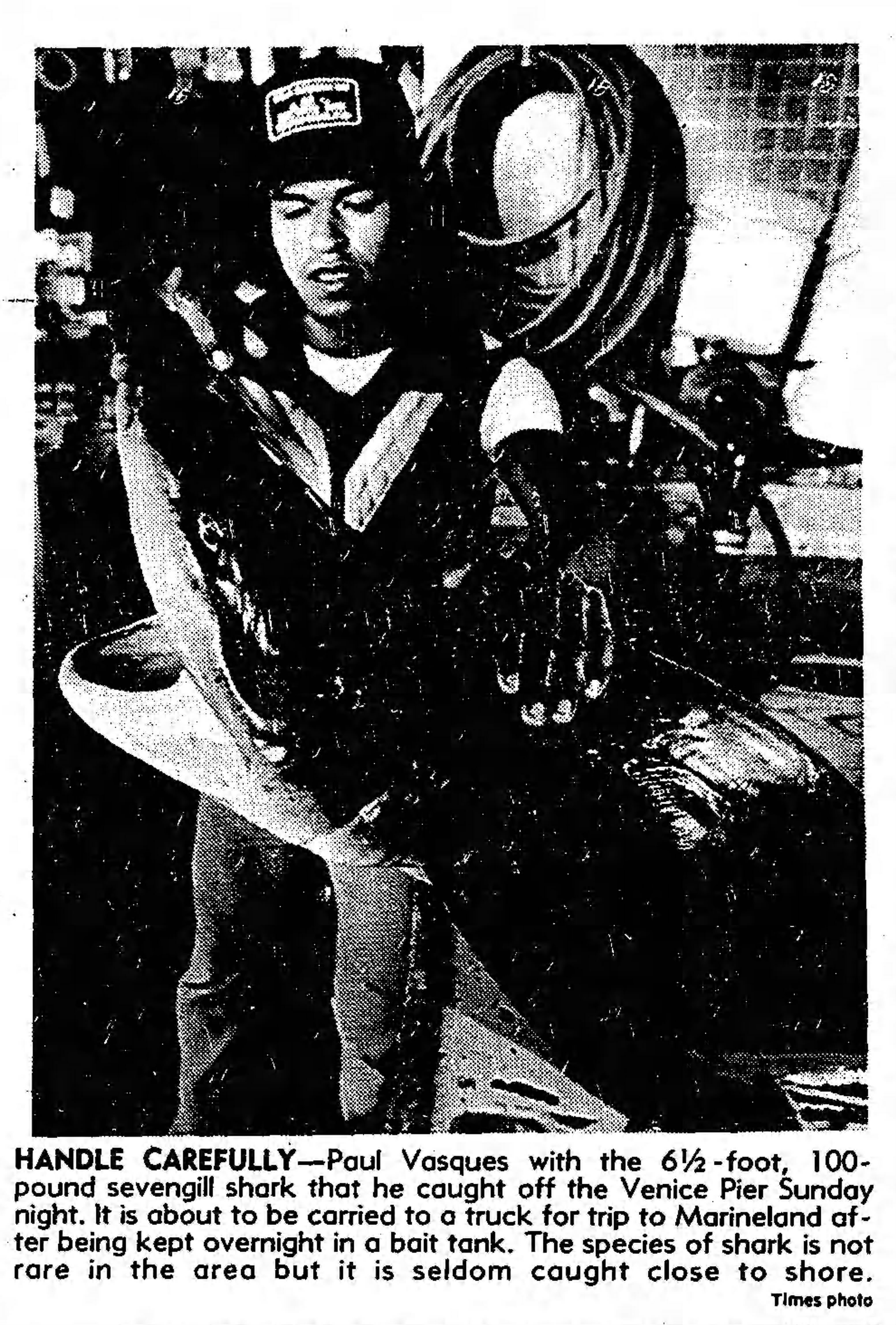
<*}}}}}}}}}>< — Many, many movies have been filmed in Venice and it started over a hundred years ago during the silent film era. The early “Amusement Piers” at Venice (Venice Pier, Lick Pier, Pickering Pier, etc.) were a favorite place for movie scenes and even after most of them closed the area along Ocean Front Walk and Windward Avenue remained popular for movies.
Perhaps to be expected, the Venice Fishing Pier became included as a site for filmmakers. The pier has been featured in several movies including Irreversible (1973); Point Blank (1991); Falling Down (1993); Uh Oh! (2003); Bounce; Lovely and Amazing; Just Married; Local Boys; Don’t; and A-Team (TV).
The only one of these cinematic masterpieces that I’ve seen is Falling Down. Toward the end of the movie, policeman Robert Duvall meets up with psychotic defense worker Michael Douglas out at the end of the pier. Duvall nostalgically recalls the fishing at the pier, “You used to be able to fish right here, now you can’t even swim in the water.” Of course it’s not true but it’s an attitude frequently seen in Los Angeles. As for the Douglas, he jumps off the pier and drowns.
<*}}}}}}}}}>< — The “Venice Pier Strut” is the name of a song on the album Pacific Blue by Franke Christopher, formerly of Tangerine Dream.
<*}}}}}}}}}>< — A gnashing of teeth was heard in 2003 when the Los Angeles Business Journal reported that the L.A. City Council had decided to change the name of the Venice Pier to the “Ruth Galanter Pier,” after a long-time, termed-out councilwoman. The news shocked local preservationists. “I mean her (Galanter) no disrespect, but this is just another attempt to gentrify things in Venice,” said Elaine Alexander, past president of the Venice Historical Society. “The name Venice and everything associated with that name needs to be preserved.” The name of the pier wasn’t changed.
<*}}}}}}}}}>< — Somewhat surprisingly given its fairly common, sandy bottom environment, this was one of the region’s best piers during the warm-water, El Niño years in the early ‘80s. Many yellowtail and white seabass were landed and it also yielded relatively uncommon species like triggerfish and needlefish. Most unusual was the small, 6-pound albacore caught off the far end of the pier in April of 1981.
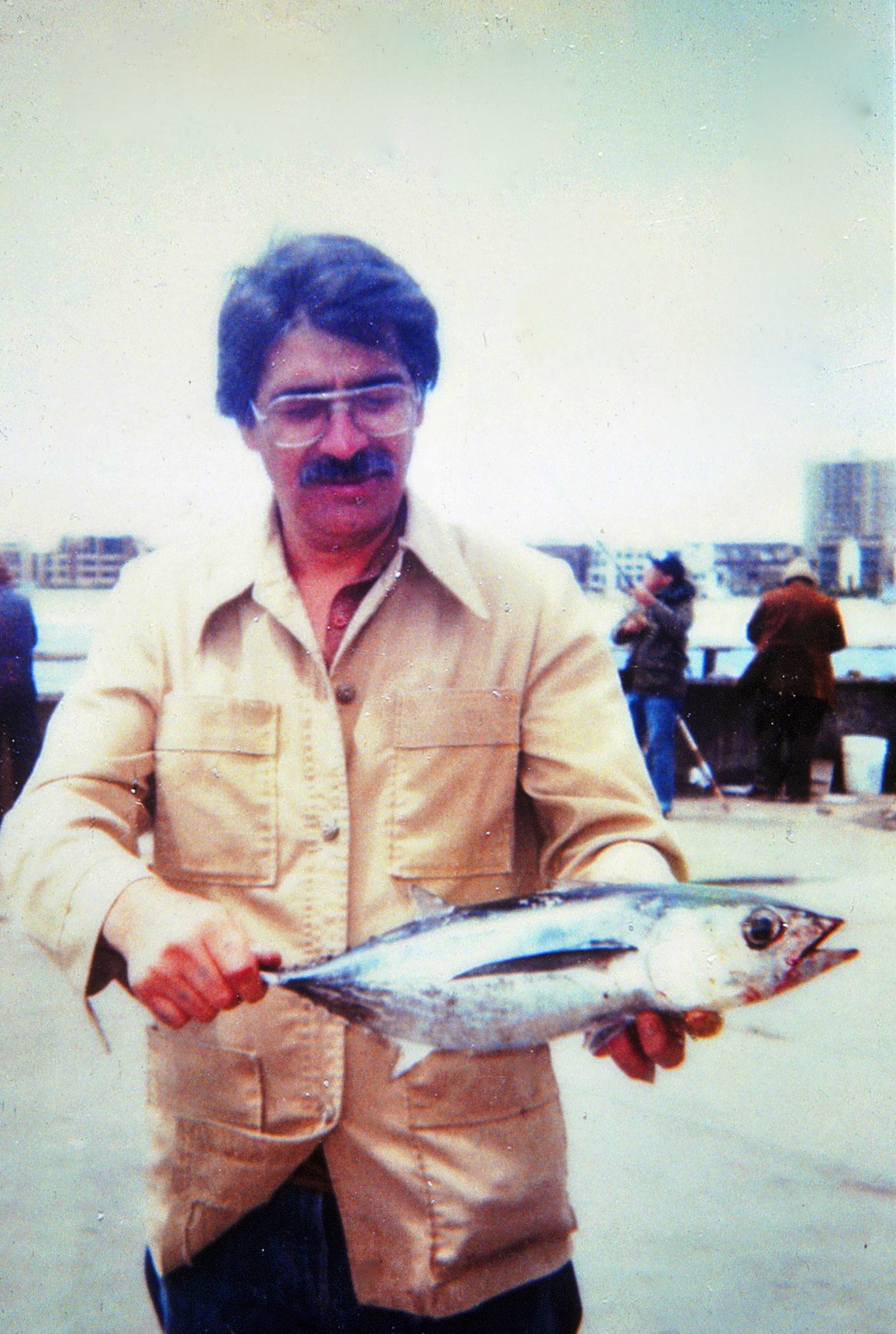
Albacore — caught April 18, 1981
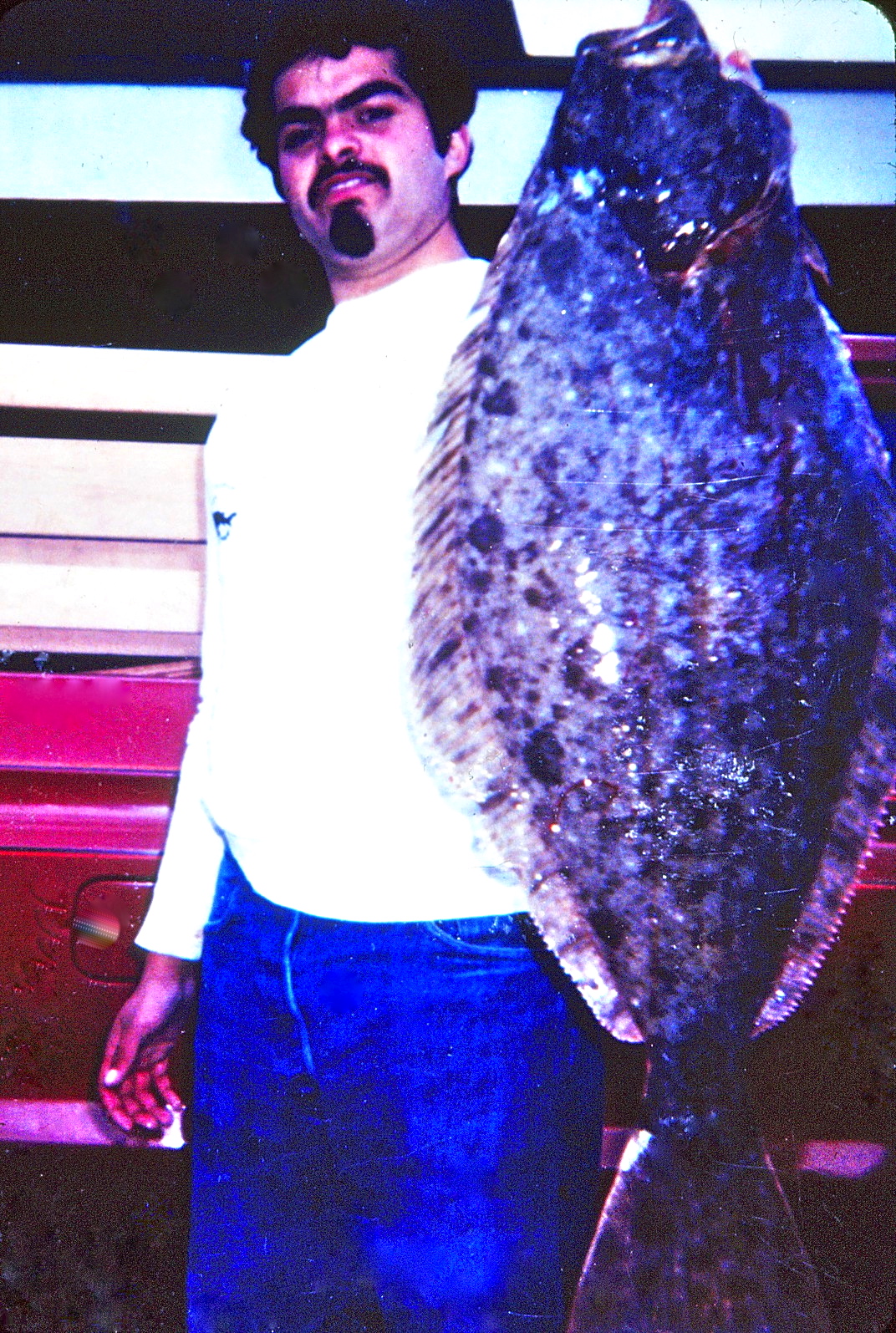
11 3/4-lb. Halibut — caught March 13, 1982
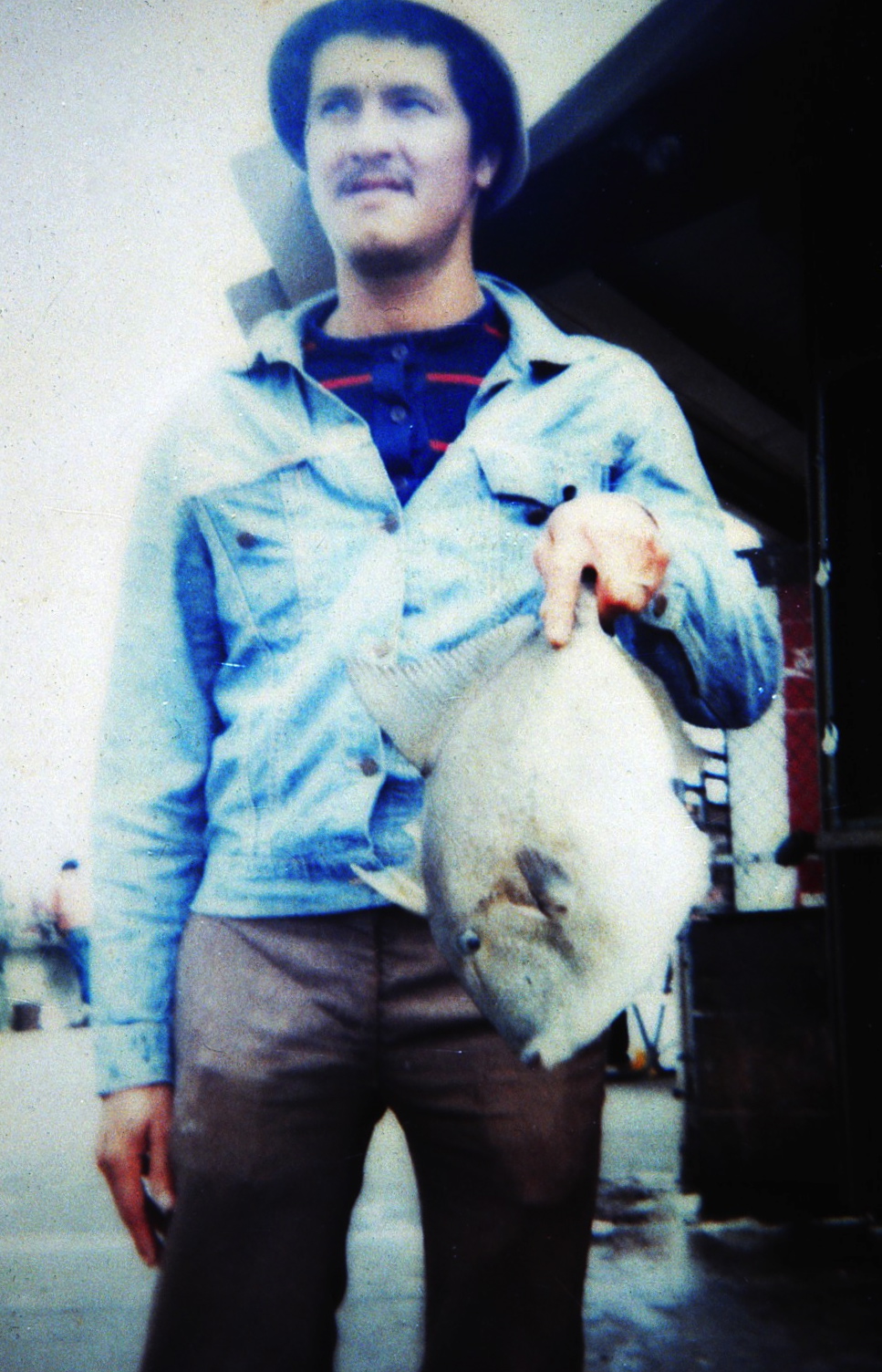
Triggerfish — caught June 20. 1982
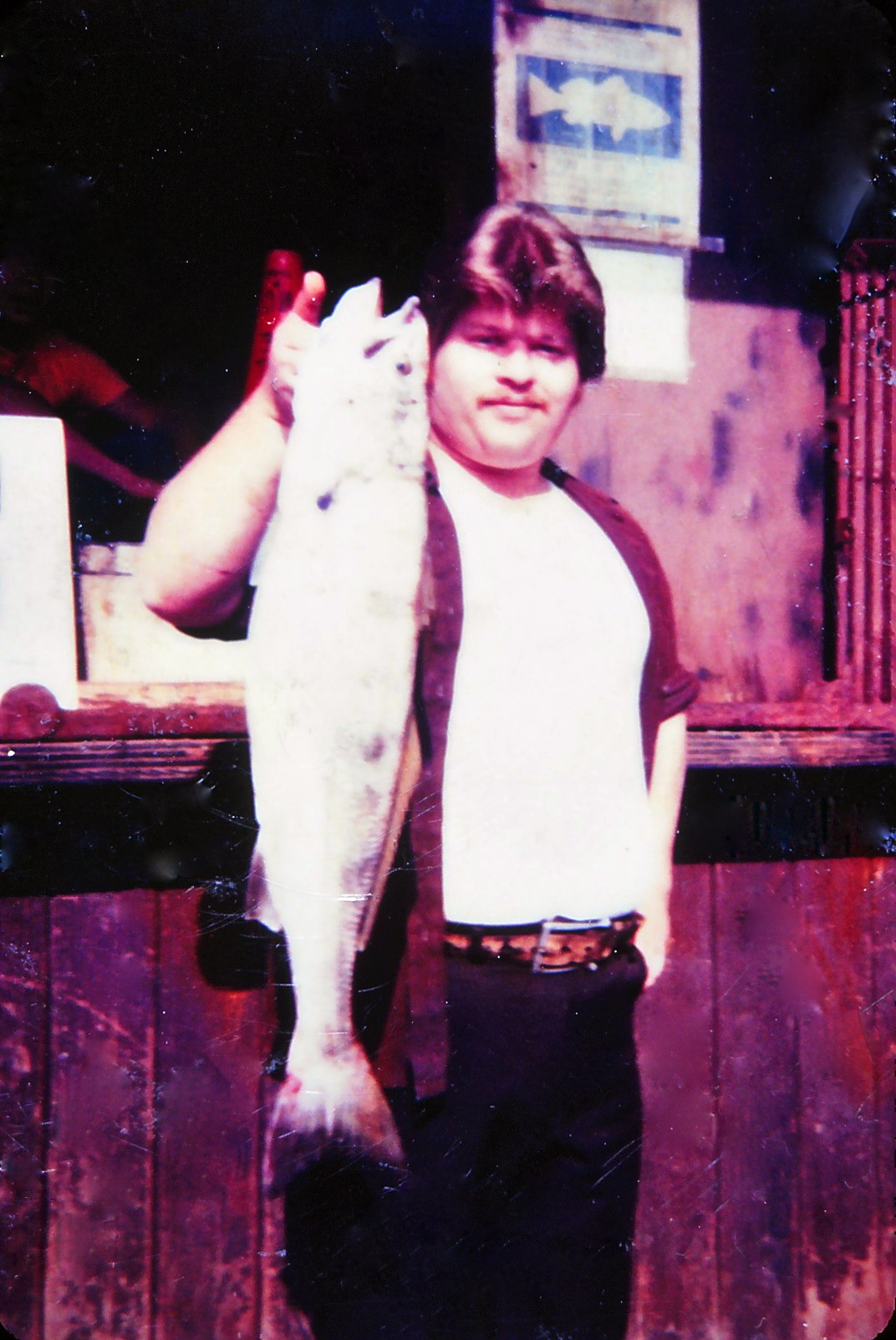
White Seabass
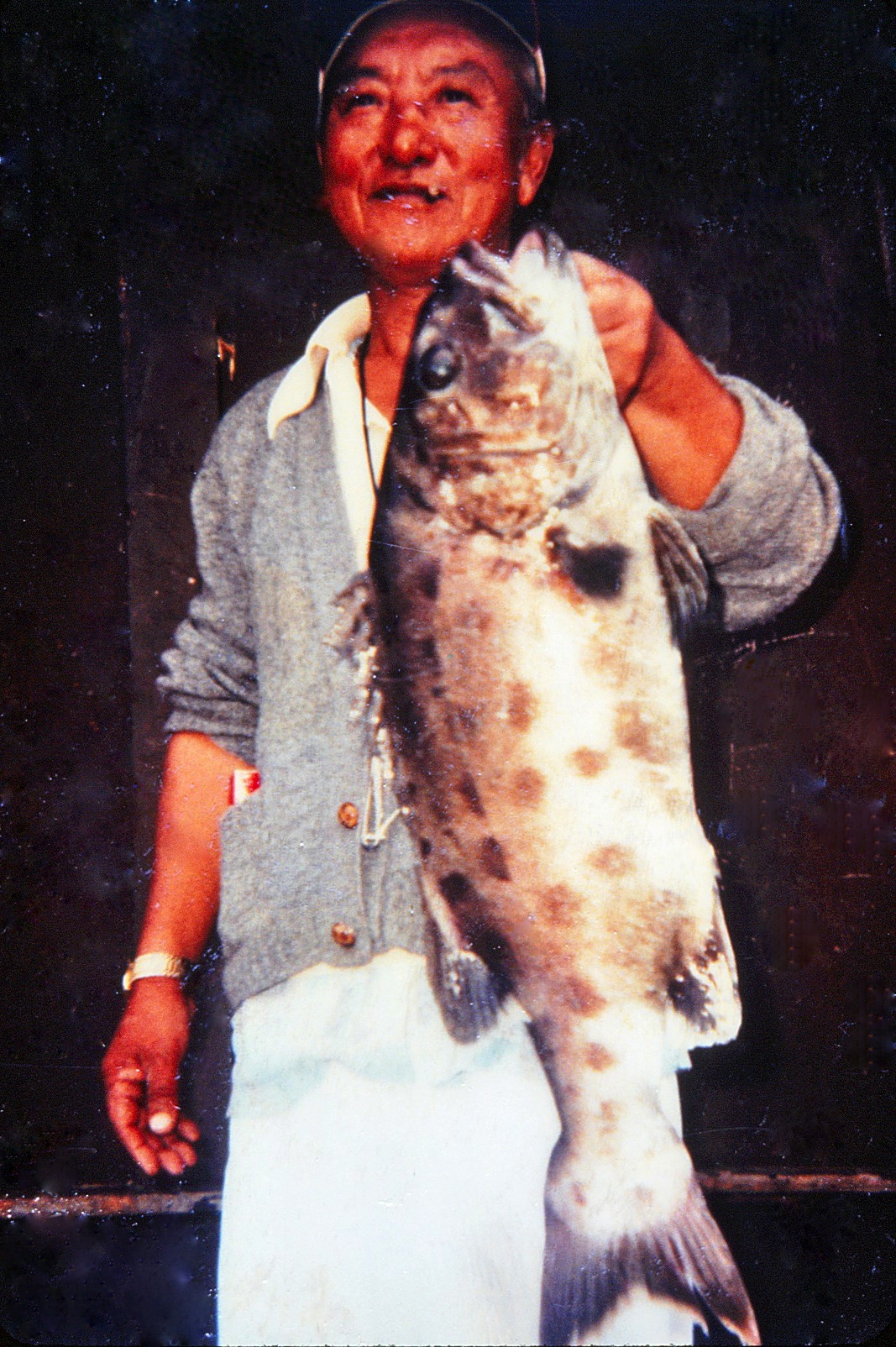
Young Giant (Black) Sea Bass (today this would be illegal)
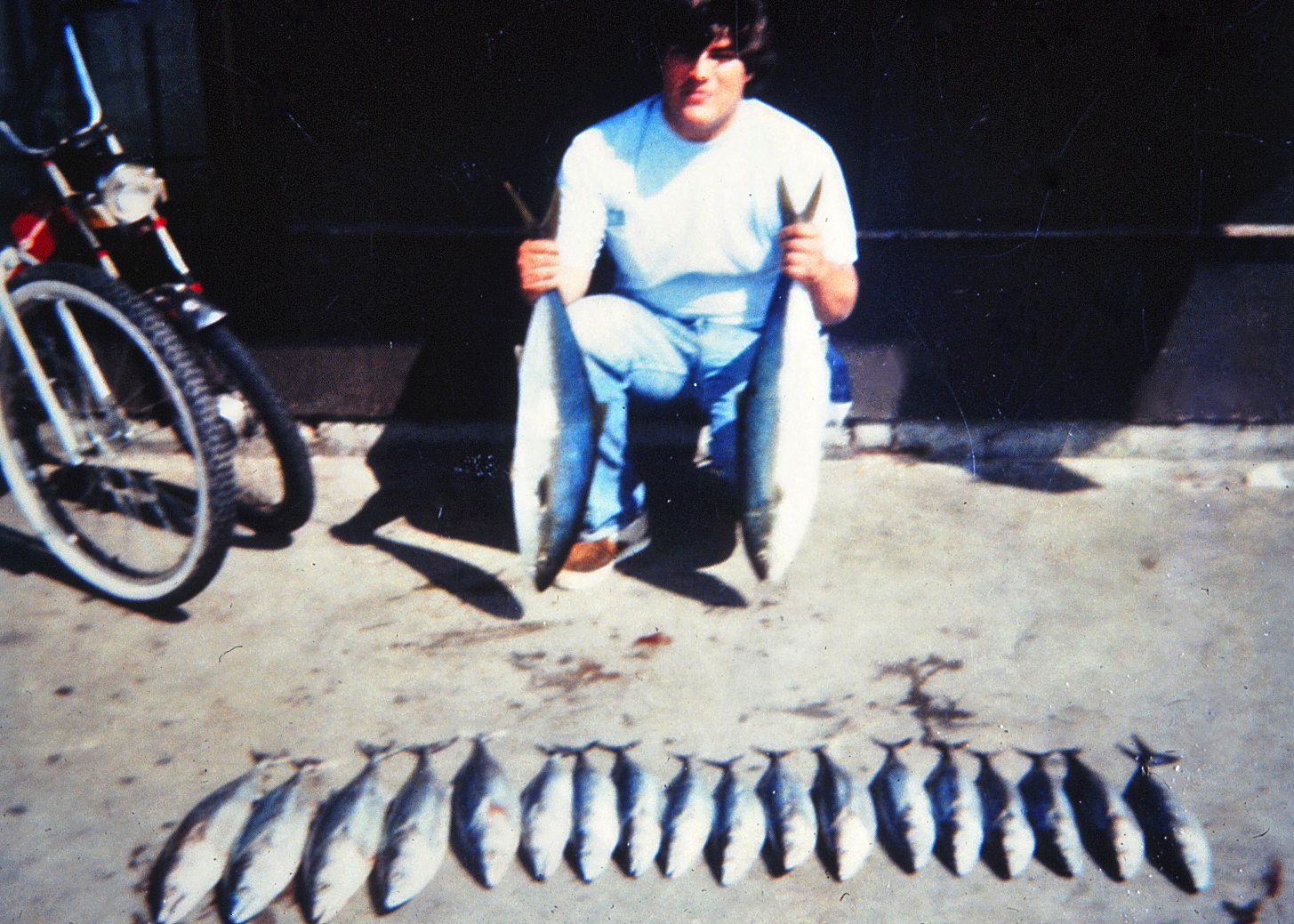
Yellowtail and Bonito
All pictures courtesy of Venice Pier Bait Shop — 1980s
<*}}}}}}}}}>< — Like Berkeley to the north, or perhaps Haight-Ashbury (the Haight) area in San Francisco, Venice has retained its bohemian flavor, a fact that most of the locals cherish. The descriptions of Venice are classic—
Venice is a quiet, shabby little place at the edge of an oil field, which extends for a mile or two along the shore. But you can still see the hotel where Sarah Bernhardt stayed. You can still live at an address on the Grand Canal (though a garbage raft will float past your window instead of a gondola); you can still admire the pure curve of a bridge which would not disgrace Italy, except that it stands among oil derricks, is made of wood and plaster and is apt to fall down soon. —Christopher Isherwood, The Shore, 1952
Venice U.S.A., Venice West, a horizontal, jerry-built slum by blue sea, warm under a semitropical Pacific sun on a Sunday afternoon. —Lawrence Lipton, The Holy Barbarians, 1959
“SoCal’s quintessential bohemian playground is the legacy of Abbot Kinney (1850-1920). A tobacco mogul by trade and a dreamer at heart, Kinney dug canals and turned fetid swampland into a cultural and recreational resort he dubbed ‘Venice of America’. For nearly two decades, crowds thronged to this ‘Coney Island on the Pacific’ to be poled around by imported gondoliers, walk among Renaissance-style arcaded buildings and listen to Benny Goodman tooting his horn in clubs. But time was not kind to Kinney’s vision.
Most of the canals were filled and paved over in 1929 and Venice soon plunged into a steep decline until its cheap rents and mellow vibe drew first the beatniks, then hippies in the ‘50s and ‘60s. A few years later, Venice turned ‘Dogtown’ as modern skateboarding hit the big time. These days there are pockets of gentrification, but overall it’s still a low-key enclave with a strong sense of community…Venice Boardwalk—part freak show, a human zoo and a wacky carnival.” —Lonely Planet, 2005
<*}}}}}}}}}>< — Venice also has its local theater and perhaps not surprisingly one play (at least) took place at the Venice Pier.
New Little Theater Performs in Venice
A new repertory company called Reredos resides in a hole in the wall at 1217 Ocean Front Walk, Venice. It is a 65-seat oblong box with an overhanging balcony and a seating area surrounding three-quarters of the stage, all of which former Synanon lawyer John Clampa has singlehandedly designed and appointed for his own plays.
The theater’s inaugural effort, a philosophical play about today entitled “High Masque,” concerns five lost souls taking long walks on the Venice pier and a bearded prophet in a black turtleneck shirt who sermonizes and poetizes and somehow rejuvenates them…A walking Synanon, he tells three speed-munching belligerents about the momentary heaven of the high and the everlasting hell which follows…
—Los Angeles Times, February 1, 1969
I’m old enough to remember Synanon and the craziness of those years. Synanon started as a drug rehabilitation program in 1958, devolved into the Church of Synanon in the 1970s (just after this play), and became yet one more violent California cult. It disbanded in 1991 due to criminal activities (including attempted murder). Given all that I can’t say I mind missing that play — even if it did take place on the Venice Pier. I think I will just stick to fishing.
<*}}}}}}}}}>< — In late 2004 I received a call from a writer in Field and Stream who had seen Pier Fishing In California and was interested in writing a story about piers, specifically about characters at the piers. What piers would be the best to visit in Los Angeles? Of course Venice and Santa Monica were two of my initial suggestions. After several phone conversations and email messages he felt he was ready to tackle LA. A few months later the following emerged:
Fishing the Venice Beach Pier — On this narrow strip of concrete in West L.A., the exotic fish of the Pacific meet the funky anglers of Southern California.If you visit Venice Beach and its carnivalesque boardwalk, your eyes will swim in a vast sea of human oddities. Walking past the tattoo parlors and incense vendors and T-shirt shops, you will dodge bikini-clad inline skaters, beer-soaked collegiate tourists, hustlers, chain-saw jugglers, mimes, preening musclemen, break-dancers, sidewalk artists, prophets, snake handlers, conga drummers, Hare Krishnas, junkies, street-corner evangelists, panhandlers, and even a turban-topped, robe-wearing electric guitarist named Harry Perry, the “Kama Kosmick Krusader,” who’s spent the last 30 years noodling fuzzy solos on his bull’s-eye-painted guitar while skating up and down the Venice boardwalk.
The Dawn Patrol — If you arrive very early in the morning, when the Pacific and the sky are an almost indistinguishable shade of bruised purple and the dark shops along the boardwalk are silent and shuttered, you’ll notice a small cadre of men pushing homemade carts loaded with bait and tackle and plastic-wrapped sandwiches.
In the gloom, they steer their carts to the gate at the Venice Fishing Pier and wait—10, 20 of them, sipping coffee, the orange glow of their cigarettes specking the dark as they wait for the pier guard to drowsily unlock the gates at 6 a.m. These are the fishermen of the Venice Pier, and when the gates open, they stream forward and take their positions along the pier’s 1,310-foot length. Then, the low mumble of the waves is quickly joined by the whir of lines being cast, by the wet plunk of sinkers hitting the water, by the happy reel-screech of a fish on.
Pier of Dreams — If the Venice boardwalk is a human circus, as many observers have described it, then the long, keyhole-shaped pier that abuts it is an angling circus, a narrow strip of concrete where the exotic and unpredictable denizens of the Pacific Ocean—needlefish have been reeled up onto the pier; occasionally someone hooks a sea lion—meet the exotic and unpredictable anglers of Los Angeles.
Piers attract a different sort of fisherman than, say, lake edges, and certainly streamsides—different, that is, though fundamentally the same. For those without the cash or gas or stamina to fish for Castaic Lake largemouths or San Gabriel River rainbows, or to charter a boat and head out to sea, a humble pier can be a thing of beauty. And the fact that no fishing license is required on California piers gilds the lily.
Some anglers revel in the social aspects of the fishing, the easy fellowship of a pier rail. For others, consistency is the draw. “If you have the soul of an artist and can see and feel the rustic charm of old…structures that have long withstood the lash of time and tide,” wrote Raymond Cannon in How to Fish the Pacific Coast in 1953, “you will at once recognize something of the hypnotic spell that compels addicts of pier fishing to return again and again, day after day, to the same old spot. Fish or no fish, rain or shine, you will see them, happy, cheerful, and contented, ensnared in the mesh of a magnetic net of their own mental creation.”
Sympathy From the Devil — That same old spot, for Stephen Penn, is beside a graffiti-coated trash barrel on the left side of the pier end, with a view south toward Marina del Rey. This is where, nearly every morning, Penn plants his folding chair and sets up a medium surf-casting rod, equipped with a secondhand Shakespeare reel, as well as a telescoping baitcaster with a length of 20-pound-test line tied to the last eye. He baits the hooks using mussels or razor clams, casts out toward an artificial quarry-rock reef, settles deep into his chair, and prays that “the devil” won’t leave him fishless that day.
When I met him, the devil hadn’t let him catch a fish all week. “I set my pole up with one hook,” he said, as if asserting the purity of his tactics over those of neighboring anglers throwing a two-hook high-low leader. “One hook, one fish. That’s all I want. Won’t that devil please give me just one fish?” A native of Youngstown, Ohio, where he grew up fishing for walleyes and perch, Penn is a singer and songwriter who once, he claims, wrote a song with funk legend George Clinton.
But Penn fell on hard times, did some literal hard time in prison, and now, homeless, spends the bulk of his days fishing in Venice while composing songs in his head—love songs, mostly, because they make people happy. “It’s kinda hard to get back on your feet,” he says. “But this is good. I get to sit out here every day thinking about lyrics and notations and sometimes I can catch me some fish. Not today, though. I’m just making music today. Rojas, he’s doing all the catching.”
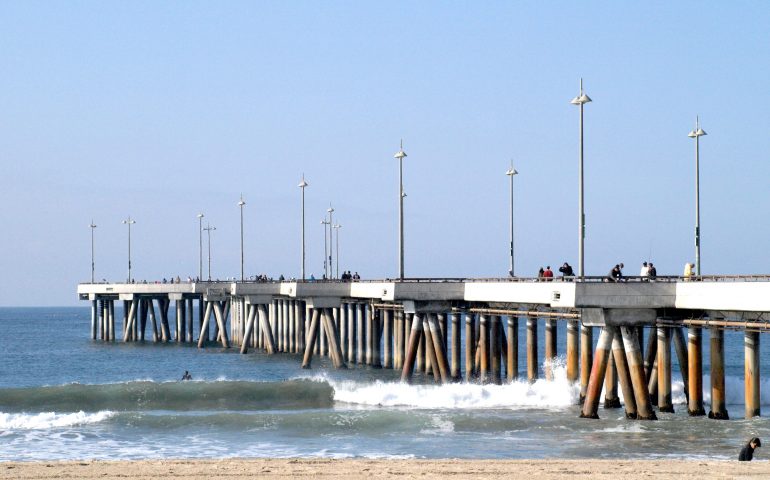
[…] Fishing Pier Pier Fishing In California File Type = jpg Source Image @ pierfishing.com Download […]
This is Great info
Thank You